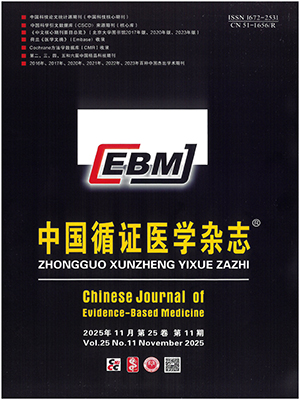| 1. |
中華醫學會麻醉學分會. 成人術后疼痛處理專家共識. 臨床麻醉學雜志, 2010, 26(3):190-196.
|
| 2. |
Macintyre PE, Jarvis DA. Age is the best predictor of postoperative morphine requirements. Pain, 1996, 64(2):357-364.
|
| 3. |
Aubrun F, Salvi N, Coriat P, et al. Sex- and age-related differences in morphine requirements for postoperative pain relief. Anesthesiology, 2005, 103(1):156-160.
|
| 4. |
Lloret LC, Decleves X, Oppert JM, et al. Pharmacology of morphine in obese patients:clinical implications. Clin Pharmacokinet, 2009, 48(10):635-651.
|
| 5. |
周晨. 術后阿片類藥物代謝與μ-阿片受體基因OPRM1A118G位點多態性之間關系的Meta 分析. 杭州:浙江大學, 2010.
|
| 6. |
Stang A. Critical evaluation of the Newcastle-Ottawa scale for the assessment of the quality of nonrandomized studies in meta-analyses. Eur J Epidemiol, 2010, 25(9):603-605.
|
| 7. |
鄭明華, 主編. Meta分析軟件的應用與實例解析. 第一版. 北京:人民衛生出版社, 2013:5.
|
| 8. |
陳杰. u阿片受體A118G基因多態性對舒芬太尼術后病人自控鎮痛的影響. 沈陽:中國醫科大學, 2008.
|
| 9. |
諸光峰, 上官王寧, 張高嬌. 浙南地區女性人群OPRM1基因多態性(rs1799971)與舒芬太尼自控鎮痛效果的研究. 浙江醫學雜志, 2014, 36(24):1997-1999.
|
| 10. |
梁惠霞, 徐漾漾, 包金榮. OPRM1, CYP3A 基因多態性對芬太尼腹式子宮全切術鎮痛效果的影響. 中國基層醫藥, 2014, 21(20):3078-3080.
|
| 11. |
張衛. OPRM1和CYP3A基因多態性對芬太尼鎮痛效應的影響. 鄭州:鄭州大學, 2009.
|
| 12. |
張雙全, 李少英, 譚秀華. μ受體基因118A→G突變對芬太尼椎管內鎮痛作用的影響. 南方醫科大學學報, 2013, 33(2):309-311.
|
| 13. |
Zhang W, Zhang YZ, Kan QC, et al. Association of human l-opioid receptor gene polymorphism A118G with fentanyl analgesia consumption in Chinese gynaecological patients. Anaesthesia, 2010, 65:130-135.
|
| 14. |
Zhang J, Yuan J, Kan QC, et al. Study of the OPRM1 A118G genetic polymorphism associated with postoperative nausea and vomiting induced by fentanyl intravenous analgesia. Minerva Anestesiologica, 2011, 77(1):33-39.
|
| 15. |
Haysshida M, Nagashima M, Satoh Y, et al. Analgesic requirements after major abdominal surgery are associated with OPRM1 gene polymorphism genotype and halotype. Pharmacogenomics, 2008, 9(11):1605-1616.
|
| 16. |
Liu J, Hu D, Jiang Y, et al. Association between single nucleotide polymorphisms in the OPRM1 Gene and intraoperative remifentanil consumption in northern Chinese women. Pharmacology, 2014, 94(5-6):273-279.
|
| 17. |
Xu GH, Gao M, Sheng QY, et al. Opioid receptor A118G polymorphism does not affect the consumption of sufentanil and ropivacaine by patient-controlled epidural analgesia after cesarean section. The Drug Monit, 2015, 37(1):53-57.
|
| 18. |
Klepstad P, Rakvag TT, Kaasa S, et al. The 118A>G polymorphism in the human m-opioid receptor gene may increase morphine requirements in patients with pain caused by malignant disease. Acta Anaesthesiol Scand, 2004, 48(10):1232-1239.
|
| 19. |
Tsai FF, Fan SZ, Yang YM, et al. Human opioid m-receptor A118G polymorphism may protect against central pruritus by epidural morphine for post-cesarean analgesia. Acta Anaesthesiol Scand, 2010, 54(10):1265-1269.
|
| 20. |
Sia AT, Lim Y, Lim EC, et al. A118G single nucleotide polymorphism of human m-opioid receptor gene influences pain perception and patient-controlled intravenous morphine consumption after intrathecal morphine for postcesarean analgesia. Anesthesiology, 2008, 109(3):520-526.
|




